Seminário especial: “How to start a biotech company – from fragments to drugs”
 CANCELADO.
CANCELADO.
 O palestrante é o Diretor de Inovação e Tecnologia Corporativa da Braskem, uma empresa Petroquímica de classe mundial com ativos em vários países, e que pelo trabalho de pesquisa em produtos de origem renovável, como o Plástico Verde, foi eleita em 2014 como uma das 50 empresas mais inovadoras do mundo. Neste colóquio, além de apresentar detalhes deste e de outros polímeros inovadores que deverão povoar o mundo na próxima década, o palestrante apresentará detalhes sobre o modelo de gestão da Inovação da Braskem, que envolve parcerias com o setor acadêmico e que inclui importante relação com a física.
O palestrante é o Diretor de Inovação e Tecnologia Corporativa da Braskem, uma empresa Petroquímica de classe mundial com ativos em vários países, e que pelo trabalho de pesquisa em produtos de origem renovável, como o Plástico Verde, foi eleita em 2014 como uma das 50 empresas mais inovadoras do mundo. Neste colóquio, além de apresentar detalhes deste e de outros polímeros inovadores que deverão povoar o mundo na próxima década, o palestrante apresentará detalhes sobre o modelo de gestão da Inovação da Braskem, que envolve parcerias com o setor acadêmico e que inclui importante relação com a física.
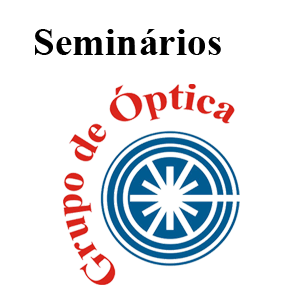 A propagação da luz nos tecidos biológicos depende das propriedades ópticas dos tecidos, e tais propriedades podem variar de indivíduo para indivíduo e de tecido para tecido, o que dificulta o estabelecimento de uma dosimetria para as fototerapias. Neste contexto, tornam-se primordiais pesquisas voltadas para o desenvolvimento de métodos que sejam capazes de determinar a distribuição espacial da luz nos tecidos biológicos de maneira individualizada, permitindo assim a individualização também da dosimetria. Este projeto tem por objetivo utilizar imagens de refletância difusa emitida por phantoms ópticos para inferir a distribuição espacial da luz, buscando a possibilidade de predizer a existência de heterogeneidades em seu interior que possam comprometer a propagação da luz.
A propagação da luz nos tecidos biológicos depende das propriedades ópticas dos tecidos, e tais propriedades podem variar de indivíduo para indivíduo e de tecido para tecido, o que dificulta o estabelecimento de uma dosimetria para as fototerapias. Neste contexto, tornam-se primordiais pesquisas voltadas para o desenvolvimento de métodos que sejam capazes de determinar a distribuição espacial da luz nos tecidos biológicos de maneira individualizada, permitindo assim a individualização também da dosimetria. Este projeto tem por objetivo utilizar imagens de refletância difusa emitida por phantoms ópticos para inferir a distribuição espacial da luz, buscando a possibilidade de predizer a existência de heterogeneidades em seu interior que possam comprometer a propagação da luz.
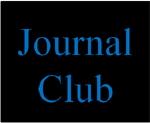 The dynamics of ultracold bosons in optical lattices is a rich field with many fundamental physics questions and applications. Cold atoms in lattices represent a very versatile tool for the quantum simulation of various other states of matter. Theoretical methods for the treatment of the dynamics in one-dimensional lattices are available, but despite the large interest in the field, to date no reliable theoretical method to describe the dynamics of two- and three-dimensional systems has been formulated. An application of the multiconfigurational time-dependent Hartree method for bosons (MCTDHB, see http://ultracold.org) to describe the dynamics of the Bose-Hubbard Hamiltonian yields reliable predictions with a controlled error for the dynamics in one-, two-, and three-dimensional systems and therefore fills in this gap. The theory is introduced and example applications of beyond mean-field dynamics are discussed.
The dynamics of ultracold bosons in optical lattices is a rich field with many fundamental physics questions and applications. Cold atoms in lattices represent a very versatile tool for the quantum simulation of various other states of matter. Theoretical methods for the treatment of the dynamics in one-dimensional lattices are available, but despite the large interest in the field, to date no reliable theoretical method to describe the dynamics of two- and three-dimensional systems has been formulated. An application of the multiconfigurational time-dependent Hartree method for bosons (MCTDHB, see http://ultracold.org) to describe the dynamics of the Bose-Hubbard Hamiltonian yields reliable predictions with a controlled error for the dynamics in one-, two-, and three-dimensional systems and therefore fills in this gap. The theory is introduced and example applications of beyond mean-field dynamics are discussed.
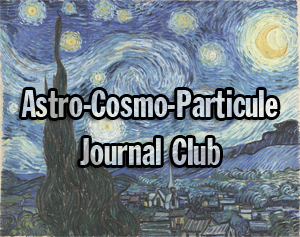 A proposta do programa é reunir estudantes e cientistas interessados em discutir temas relevantes na física de partículas, cosmologia e astrofísica de partículas.
A proposta do programa é reunir estudantes e cientistas interessados em discutir temas relevantes na física de partículas, cosmologia e astrofísica de partículas.
Todos estão convidados a participar das reuniões, mas se recomenda a leitura do artigo com antecedência, para que se possa acompanhar a discussão.
Clique aqui para saber qual artigo será discutido no próximo encontro.
Assessoria de Comunicação
 Será apresentado o conceito biológico de homeostase e sua extensão para circuitos nervosos. Em pequenos circuitos neurais, especializados na produção de padrões motores rítmicos de maneira autônoma, aparentemente, a homeostase leva à existência de padrões qualitativamente semelhantes em animais e até em espécies diferentes – as assinaturas neurais. Essas assinaturas podem ser usadas não apenas para caracterizar o tipo de neurônio que a produziu, mas tambem para encontrar qual a família de modelos matemáticos mais adequada para representar este neurônio.
Será apresentado o conceito biológico de homeostase e sua extensão para circuitos nervosos. Em pequenos circuitos neurais, especializados na produção de padrões motores rítmicos de maneira autônoma, aparentemente, a homeostase leva à existência de padrões qualitativamente semelhantes em animais e até em espécies diferentes – as assinaturas neurais. Essas assinaturas podem ser usadas não apenas para caracterizar o tipo de neurônio que a produziu, mas tambem para encontrar qual a família de modelos matemáticos mais adequada para representar este neurônio.
 A trajetória do ensino superior da Física no Brasil desde a vinda de Gleb Wataghin será brevemente discutida à luz de alguns marcos e aspectos históricos como o estabelecimento da dedicação exclusiva, o crescimento da pós-graduação e a busca da interdisciplinaridade.
A trajetória do ensino superior da Física no Brasil desde a vinda de Gleb Wataghin será brevemente discutida à luz de alguns marcos e aspectos históricos como o estabelecimento da dedicação exclusiva, o crescimento da pós-graduação e a busca da interdisciplinaridade.
Nesse contexto serão destacadas algumas características tradicionais do ensino superior de Física, que passaram a ser discutidos para outros cursos. Por outro lado, será elencado um conjunto de desafios que os cursos de Física do Brasil precisam enfrentar de forma mais abrangente.
 In this talk, a brief introduction to pioneering results in quantum-dot-based spin filters will be presented,1-4 followed by numerical results5 indicating that by suitably controlling the individual gate voltages of a capacitively coupled parallel double quantum dot, where each quantum dot is coupled to one of two independent non-magnetic channels, this system can be set into a spin-orbital Kondo state by applying a magnetic field. This Kondo regime, closely related to the SU(4) Kondo, flips total spin from one to zero through cotunneling processes that generate almost totally spin-polarized currents with opposite spin orientation along the two channels. Moreover, by appropriately changing the gate voltages of both quantum dots, one can simultaneously flip the spin polarization of the currents in each channel. As a similar zero magnetic field Kondo effect has been recently observed by Y. Okazaki et al.,6 we analyze a range of magnetic field values where this polarization effect seems robust, suggesting that the setup may be used as an efficient bipolar spin filter, which can generate electrostatically reversible spatially separated spin currents with opposite polarizations.7
In this talk, a brief introduction to pioneering results in quantum-dot-based spin filters will be presented,1-4 followed by numerical results5 indicating that by suitably controlling the individual gate voltages of a capacitively coupled parallel double quantum dot, where each quantum dot is coupled to one of two independent non-magnetic channels, this system can be set into a spin-orbital Kondo state by applying a magnetic field. This Kondo regime, closely related to the SU(4) Kondo, flips total spin from one to zero through cotunneling processes that generate almost totally spin-polarized currents with opposite spin orientation along the two channels. Moreover, by appropriately changing the gate voltages of both quantum dots, one can simultaneously flip the spin polarization of the currents in each channel. As a similar zero magnetic field Kondo effect has been recently observed by Y. Okazaki et al.,6 we analyze a range of magnetic field values where this polarization effect seems robust, suggesting that the setup may be used as an efficient bipolar spin filter, which can generate electrostatically reversible spatially separated spin currents with opposite polarizations.7
1. P. Recher et al., Phys. Rev. Lett. 85, 1962 (2000).
2 R. Hanson et al., Phys. Rev. B 70, 241304(R) (2004).
3. L. Borda et al., Phys. Rev. Lett. 90, 026602 (2003).
4. D. Feinberg and P. Simon, Appl. Phys. Lett. 85,1846 (2004).
5. C. A. Büsser, A. E. Feiguin, and G. B. Martins, Phys. Rev. B 85, 241310 (R) (2012); E. Vernek, C. A. Büsser, E. V. Anda, A. E. Feiguin, and G. B. Martins, Appl. Phys. Lett. 104, 132401 (2014).
6. Y. Okazaki et al., Phys. Rev. B 84, (R)161305 (2011).
7. S. Amasha, A. J. Keller, I. G. Rau, A. Carmi, J. A. Katine, Hadas Shtrikman, Y. Oreg, and D. Goldhaber-Gordon, Phys. Rev. Lett. 110, 046604 (2013).
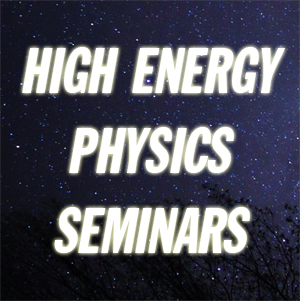 Studying the high energy regime of QCD is a problem that can be tackled by perturbation theory. This is a consequence of asymptotic freedom, which states that the coupling constant of QCD decreases when increasing the energy. The low energy regime (often called the “nonperturbative regime”) is much more difficult to access, mainly because the standard perturbation theory is not applicable anymore.
Studying the high energy regime of QCD is a problem that can be tackled by perturbation theory. This is a consequence of asymptotic freedom, which states that the coupling constant of QCD decreases when increasing the energy. The low energy regime (often called the “nonperturbative regime”) is much more difficult to access, mainly because the standard perturbation theory is not applicable anymore.
Nonetheless, I will discuss the possibility of studying the low-energy regime of QCD perturbatively. The main idea is to perform perturbation theory not around the usual Faddeev-Popov action, but around a simple extension of the latter, known as the Curci-Ferrari model. I will discuss the properties of this model and present several 1-loop calculations a) for correlation functions 2) for the phase diagram of QCD. Comparison with lattice data show that all these quantities can be reproduced with a precision of the order of 15-20%.
Para informações sobre os próximos seminários, acesse http://www.ifsc.usp.br/~lattice/hepseminar/
 The dynamics of ultracold bosons in optical lattices is a rich field with many fundamental physics questions and applications. Cold atoms in lattices represent a very versatile tool for the quantum simulation of various other states of matter. Theoretical methods for the treatment of the dynamics in one-dimensional lattices are available, but despite the large interest in the field, to date no reliable theoretical method to describe the dynamics of two- and three-dimensional systems has been formulated.
The dynamics of ultracold bosons in optical lattices is a rich field with many fundamental physics questions and applications. Cold atoms in lattices represent a very versatile tool for the quantum simulation of various other states of matter. Theoretical methods for the treatment of the dynamics in one-dimensional lattices are available, but despite the large interest in the field, to date no reliable theoretical method to describe the dynamics of two- and three-dimensional systems has been formulated.
An application of the multiconfigurational time-dependent Hartree method for bosons (MCTDHB, see http://ultracold.org) to describe the dynamics of the Bose-Hubbard Hamiltonian yields reliable predictions with a controlled error for the dynamics in one-, two-, and three-dimensional systems and therefore fills in this gap. The theory is introduced and example applications of beyond mean-field dynamics are discussed.
 A Terapia Fotodinâmica surgiu como uma modalidade terapêutica promissora, devido ao seu papel como tratamento para neoplasias e outras doenças de pele. Ela é baseada no acúmulo seletivo de um fotossensibilizador no tecido tumoral, seguido pela iluminação com fonte de luz de um comprimento de onda apropriado, ocasionando na morte do tumor. Embora a cultura celular convencional em monocamada tenha sido uma ferramenta essencial para a biologia moderna, uma vez que permite avaliar o comportamento das células fora do organismo, ela recria inadequadamente o ambiente natural no qual as células residem. Essa limitação tem levado a pesquisas em cultivo celular tridimensional in vitro, como o método de levitação magnética (MLM). No MLM, nanopartículas ferromagnéticas são ligadas a células em cultura em monocamada para torná-las magnéticas. Quando suspensas em meio de cultura, é possível a utilização de um campo magnético externo, assim as células levitam na interface ar-líquido, formando matriz extracelular e agregando-se para formar cultura tridimensional ou um tecido in vitro. Dessa forma, esse estudo busca avaliar a eficácia da Terapia Fotodinâmica em modelo de tumor de melanoma humano, usando levitação magnética, uma vez que um modelo de tumor in vitro permite observar a resposta fotodinâmica em função da profundidade e também se há ocorrência de recrescimento tumoral pós-tratamento.
A Terapia Fotodinâmica surgiu como uma modalidade terapêutica promissora, devido ao seu papel como tratamento para neoplasias e outras doenças de pele. Ela é baseada no acúmulo seletivo de um fotossensibilizador no tecido tumoral, seguido pela iluminação com fonte de luz de um comprimento de onda apropriado, ocasionando na morte do tumor. Embora a cultura celular convencional em monocamada tenha sido uma ferramenta essencial para a biologia moderna, uma vez que permite avaliar o comportamento das células fora do organismo, ela recria inadequadamente o ambiente natural no qual as células residem. Essa limitação tem levado a pesquisas em cultivo celular tridimensional in vitro, como o método de levitação magnética (MLM). No MLM, nanopartículas ferromagnéticas são ligadas a células em cultura em monocamada para torná-las magnéticas. Quando suspensas em meio de cultura, é possível a utilização de um campo magnético externo, assim as células levitam na interface ar-líquido, formando matriz extracelular e agregando-se para formar cultura tridimensional ou um tecido in vitro. Dessa forma, esse estudo busca avaliar a eficácia da Terapia Fotodinâmica em modelo de tumor de melanoma humano, usando levitação magnética, uma vez que um modelo de tumor in vitro permite observar a resposta fotodinâmica em função da profundidade e também se há ocorrência de recrescimento tumoral pós-tratamento.
 A participação feminina no ambiente profissional tem aumentado significativamente nos últimos anos. O Censo da Educação Superior de 2010 mostra que, entre as 20 carreiras de graduação com maior número de recém-formados, as mulheres são maioria em 15 delas. Além disso, hoje são maioria entre os discentes nas universidades brasileiras e já compõem cerca de 50% dos docentes nas instituições públicas, segundo o mesmo Censo da Educação Superior de 2010. No entanto, este crescimento não está homogeneamente distribuído entre as diversas disciplinas. Em particular, o percentual de mulheres na área de Exatas é muito pequeno e diminui desproporcionalmente à medida que se avança na carreira. Assim, há uma sub-representação segundo as áreas do conhecimento como também segundo o nível da carreira. Este cenário inspira a questão que iremos analisar neste seminário: por que a vagarosidade no avanço das mulheres nas carreiras científicas como um todo?
A participação feminina no ambiente profissional tem aumentado significativamente nos últimos anos. O Censo da Educação Superior de 2010 mostra que, entre as 20 carreiras de graduação com maior número de recém-formados, as mulheres são maioria em 15 delas. Além disso, hoje são maioria entre os discentes nas universidades brasileiras e já compõem cerca de 50% dos docentes nas instituições públicas, segundo o mesmo Censo da Educação Superior de 2010. No entanto, este crescimento não está homogeneamente distribuído entre as diversas disciplinas. Em particular, o percentual de mulheres na área de Exatas é muito pequeno e diminui desproporcionalmente à medida que se avança na carreira. Assim, há uma sub-representação segundo as áreas do conhecimento como também segundo o nível da carreira. Este cenário inspira a questão que iremos analisar neste seminário: por que a vagarosidade no avanço das mulheres nas carreiras científicas como um todo?
 O expoente de Hurst (H) tem sido amplamente utilizado para caracterizar o tipo de difusão em estudos envolvendo caminhantes aleatórios rotulados na literatura como Random Walks. A dependência de H com o alcance da memória apresenta um desafio adicional, particularmente quando danos são introduzidos no perfil de memória. A característica mais notável desses problemas é o surgimento de uma fase superdifusiva com assinatura log-periódica associada à memória de longo alcance, que surge numa região não usual do diagrama de fases, onde o feedback é negativo. Vamos discutir esses problemas sob os pontos de vista numérico e analítico.
O expoente de Hurst (H) tem sido amplamente utilizado para caracterizar o tipo de difusão em estudos envolvendo caminhantes aleatórios rotulados na literatura como Random Walks. A dependência de H com o alcance da memória apresenta um desafio adicional, particularmente quando danos são introduzidos no perfil de memória. A característica mais notável desses problemas é o surgimento de uma fase superdifusiva com assinatura log-periódica associada à memória de longo alcance, que surge numa região não usual do diagrama de fases, onde o feedback é negativo. Vamos discutir esses problemas sob os pontos de vista numérico e analítico.
 Neste seminário, apresentaremos as potencialidades da Espectroscopia Dielétrica/Impedância em estudos dirigidos a examinar e entender a correlação existente entre respostas dielétricas/impedância de materiais e as características (micro) estruturais destes. O seminário começará com a apresentação das bases físicas desta técnica espectroscópica, dos modelos para descrever processos de polarização e condução em materiais, em conexão com a interpretação de dados em termos de circuitos equivalentes. A seguir, diversos exemplos serão dados, incluindo blendas diesel/biodiesel, biodiesel conforme a matéria-prima, sistemas vítreos versus vitrocerâmicos, efeito de tamanho de grãos em materiais eletrocerâmicos ferroelétricos e não-ferroelétricos, uma visão microestrutural de materiais PTCR e varistores baseados em efeito de interfaces etc.
Neste seminário, apresentaremos as potencialidades da Espectroscopia Dielétrica/Impedância em estudos dirigidos a examinar e entender a correlação existente entre respostas dielétricas/impedância de materiais e as características (micro) estruturais destes. O seminário começará com a apresentação das bases físicas desta técnica espectroscópica, dos modelos para descrever processos de polarização e condução em materiais, em conexão com a interpretação de dados em termos de circuitos equivalentes. A seguir, diversos exemplos serão dados, incluindo blendas diesel/biodiesel, biodiesel conforme a matéria-prima, sistemas vítreos versus vitrocerâmicos, efeito de tamanho de grãos em materiais eletrocerâmicos ferroelétricos e não-ferroelétricos, uma visão microestrutural de materiais PTCR e varistores baseados em efeito de interfaces etc.
 A terapia fotodinâmica (TFD) e a radioterapia são técnicas já conhecidas no tratamento do câncer. A TFD consiste na interação entre fotossensibilizador, luz e oxigênio molecular; que combinados causam morte celular. Já radioterapia é uma técnica que utiliza radiação ionizante para tratamento de tumores. A associação entre a TFD e a radioterapia foi pouco estudada até o momento e poderia aumentar o dano causado ao tecido enquanto diminui os efeitos colaterais provenientes da radioterapia. O objetivo desse estudo é avaliar o dano da combinação entre TFD e radioterapia. Nesse seminário serão abordados os resultados obtidos pela aluna no Dartmouth College, EUA. Durante o estágio foram realizadas medidas de reflectância e fluorescência para acompanhar a resposta da radioterapia e terapia fotodinâmica mostrando os produtos do dano vascular, como, tamanho do vaso e concentração de met-hemoglobina e bilirubina, além da saturação de oxigênio. Os experimentos foram realizados em pele normal de ratos wistar e posteriormente em tumores de pele em camundongos nude, onde foi acompanhado o crescimento do tumor após os tratamentos.
A terapia fotodinâmica (TFD) e a radioterapia são técnicas já conhecidas no tratamento do câncer. A TFD consiste na interação entre fotossensibilizador, luz e oxigênio molecular; que combinados causam morte celular. Já radioterapia é uma técnica que utiliza radiação ionizante para tratamento de tumores. A associação entre a TFD e a radioterapia foi pouco estudada até o momento e poderia aumentar o dano causado ao tecido enquanto diminui os efeitos colaterais provenientes da radioterapia. O objetivo desse estudo é avaliar o dano da combinação entre TFD e radioterapia. Nesse seminário serão abordados os resultados obtidos pela aluna no Dartmouth College, EUA. Durante o estágio foram realizadas medidas de reflectância e fluorescência para acompanhar a resposta da radioterapia e terapia fotodinâmica mostrando os produtos do dano vascular, como, tamanho do vaso e concentração de met-hemoglobina e bilirubina, além da saturação de oxigênio. Os experimentos foram realizados em pele normal de ratos wistar e posteriormente em tumores de pele em camundongos nude, onde foi acompanhado o crescimento do tumor após os tratamentos.
 This seminar shall focus the essentials of confocal microscopy, applications and perspectives, particularly based on the experience of Dr. Sheppard.
This seminar shall focus the essentials of confocal microscopy, applications and perspectives, particularly based on the experience of Dr. Sheppard.
Spin-orbit interaction is responsible for many physical phenomena which are under intensive study currently. Here we discuss several of them.
 The first phenomenon is the edge spin accumulation, which appears due to spin-orbit interaction in 2D mesoscopic structures in the presence of a charge current. We consider the case of a strong spin-orbit-related splitting of the electron spectrum, i.e., the spin precession length is small compared to the mean free path l. The structure can be either in a ballistic regime (when the mean free path is the largest scale in the problem) or in a quasi-ballistic regime (when l is much smaller than the sample size).
The first phenomenon is the edge spin accumulation, which appears due to spin-orbit interaction in 2D mesoscopic structures in the presence of a charge current. We consider the case of a strong spin-orbit-related splitting of the electron spectrum, i.e., the spin precession length is small compared to the mean free path l. The structure can be either in a ballistic regime (when the mean free path is the largest scale in the problem) or in a quasi-ballistic regime (when l is much smaller than the sample size).
We show how the physics of edge spin accumulation in different situations should be understood from the point of view of unitarity of boundary scattering. Using transparent method of scattering states, we are able to explain some previously puzzling theoretical results. In particular, we clarify the important role of the form of the spin-orbit Hamiltonian, the role of the boundary conditions, etc.. The relation between the edge spin density and the bulk spin current in different regimes is discussed.
Besides, we consider several new transport phenomena which appear in the presence of spin-orbit interaction, for example, magnetotransport phenomena in an external classical magnetic field. In particular, a new mechanism of negative magnetoresistance appears which is due to destruction of spin fluxes by the magnetic field, and which can be really pronounced in 2D systems with strong scatterers.
 Neste seminário serão abordados aspectos relevantes de processos patológicos bucais importantes para as pesquisas utilizando as técnicas espectroscópicas. Algumas lesões bucais, como leucoplasia e câncer bucal, serão mencionadas com relação à epidemiologia e fatores etiológicos. Resultados envolvendo a utilização das técnicas de espectroscopia Raman e FT-IR em amostras ex vivo e in vitro, assim como publicações recentes também serão apresentadas. Por fim, a utilização da espectrosocopia Raman in vivo, em um sistema portátil, será abordada como projeto de pesquisa atual do nosso laboratório, visando o diagnóstico precoce e minimamente invasivo das leões bucais.
Neste seminário serão abordados aspectos relevantes de processos patológicos bucais importantes para as pesquisas utilizando as técnicas espectroscópicas. Algumas lesões bucais, como leucoplasia e câncer bucal, serão mencionadas com relação à epidemiologia e fatores etiológicos. Resultados envolvendo a utilização das técnicas de espectroscopia Raman e FT-IR em amostras ex vivo e in vitro, assim como publicações recentes também serão apresentadas. Por fim, a utilização da espectrosocopia Raman in vivo, em um sistema portátil, será abordada como projeto de pesquisa atual do nosso laboratório, visando o diagnóstico precoce e minimamente invasivo das leões bucais.
 Topological defects (aka topological solitons) appear in field theory models with spontaneous symmetry breaking and a non-trivial vacuum manifold. Cosmic strings are created whenever a U(1) symmetry gets spontaneously broken and are the topological defect that seems most important from the point of view of cosmological applications. There are several reasons for this: on the one hand it is believed that cosmic strings might be linked to the fundamental strings of String theory and on the other essentially all models that try to embed the Theory of Inflation into the scheme of Grand Unification predict the production of cosmic strings. Furthermore, the analysis of recent Cosmic Microwave Background (CMB) data suggests that cosmological models containing cosmic strings provide a better fit to both the temperature as well as polarization anisotropy data than inflaton and/or dust models alone. In the first part of my talk, I will discuss the “zoo” of cosmic strings available and also mention their gravitational properties. In the second part of my talk I will concentrate on superconducting strings. These are current-carrying strings, which can have an additional internal structure in the form of bosonic or fermionic fields. This internal structure can lead to the formation of vortons, i.e. loops of cosmic string that are balanced against collapse by a non-vanishing angular momentum.
Topological defects (aka topological solitons) appear in field theory models with spontaneous symmetry breaking and a non-trivial vacuum manifold. Cosmic strings are created whenever a U(1) symmetry gets spontaneously broken and are the topological defect that seems most important from the point of view of cosmological applications. There are several reasons for this: on the one hand it is believed that cosmic strings might be linked to the fundamental strings of String theory and on the other essentially all models that try to embed the Theory of Inflation into the scheme of Grand Unification predict the production of cosmic strings. Furthermore, the analysis of recent Cosmic Microwave Background (CMB) data suggests that cosmological models containing cosmic strings provide a better fit to both the temperature as well as polarization anisotropy data than inflaton and/or dust models alone. In the first part of my talk, I will discuss the “zoo” of cosmic strings available and also mention their gravitational properties. In the second part of my talk I will concentrate on superconducting strings. These are current-carrying strings, which can have an additional internal structure in the form of bosonic or fermionic fields. This internal structure can lead to the formation of vortons, i.e. loops of cosmic string that are balanced against collapse by a non-vanishing angular momentum.
Para mais informações, acesse http://www.ifsc.usp.br/~lattice/hepseminar/
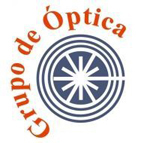 A terapia fotodinâmica (TFD) é uma modalidade terapêutica que combina o uso de luz, oxigênio molecular (O2) e compostos fotossensíveis para causar a morte às células-alvo. A curcumina é um composto antioxidante natural, de cor amarela, extraída do açafrão (Curcuma longa Linn), que possui várias atividades farmacológicas, tais como anti-inflamatória, antimicrobiana e anticâncer, e que também pode ser utilizada como fotossensibilizador (FS) na TFD. No entanto, a curcumina possui propriedades altamente hidrofóbicas, o que resulta em uma baixa biodisponibilidade sistêmica e dificulta suas aplicações. As principais estratégias para superar tais limitações são baseadas no carregamento do composto em nanocarregadores, que são variáveis, como as nanopartículas poliméricas, micelas, ciclodextrinas, dispersões sólidas, emulsões, lipossomas, transportadores de peptídeos, entre outras. Os nanocarregadores devem ser capazes de incorporar o FS, sem que ele perca ou altere sua atividade. Assim, com o objetivo de melhorar sua estabilidade e otimizar sua ação fotodinâmica, a curcumina foi encapsulada em nanopartículas de PLGA (polímero) e caracterizada quanto ao seu tamanho, potencial zeta, perfil de liberação. Para avaliar sua eficiência in vitro, a mesma foi testada em fungo e bactérias (Gram positiva e Gram negativa), uma vez que a inativação fotodinâmica de microrganismos é considerada uma alternativa promissora para infecções resistentes. Posteriormente, os resultados obtidos foram comparados com os da curcumina em sua forma livre (solução aquosa), a fim de verificar se a formulação de nanopartículas obteve melhor desempenho.
A terapia fotodinâmica (TFD) é uma modalidade terapêutica que combina o uso de luz, oxigênio molecular (O2) e compostos fotossensíveis para causar a morte às células-alvo. A curcumina é um composto antioxidante natural, de cor amarela, extraída do açafrão (Curcuma longa Linn), que possui várias atividades farmacológicas, tais como anti-inflamatória, antimicrobiana e anticâncer, e que também pode ser utilizada como fotossensibilizador (FS) na TFD. No entanto, a curcumina possui propriedades altamente hidrofóbicas, o que resulta em uma baixa biodisponibilidade sistêmica e dificulta suas aplicações. As principais estratégias para superar tais limitações são baseadas no carregamento do composto em nanocarregadores, que são variáveis, como as nanopartículas poliméricas, micelas, ciclodextrinas, dispersões sólidas, emulsões, lipossomas, transportadores de peptídeos, entre outras. Os nanocarregadores devem ser capazes de incorporar o FS, sem que ele perca ou altere sua atividade. Assim, com o objetivo de melhorar sua estabilidade e otimizar sua ação fotodinâmica, a curcumina foi encapsulada em nanopartículas de PLGA (polímero) e caracterizada quanto ao seu tamanho, potencial zeta, perfil de liberação. Para avaliar sua eficiência in vitro, a mesma foi testada em fungo e bactérias (Gram positiva e Gram negativa), uma vez que a inativação fotodinâmica de microrganismos é considerada uma alternativa promissora para infecções resistentes. Posteriormente, os resultados obtidos foram comparados com os da curcumina em sua forma livre (solução aquosa), a fim de verificar se a formulação de nanopartículas obteve melhor desempenho.